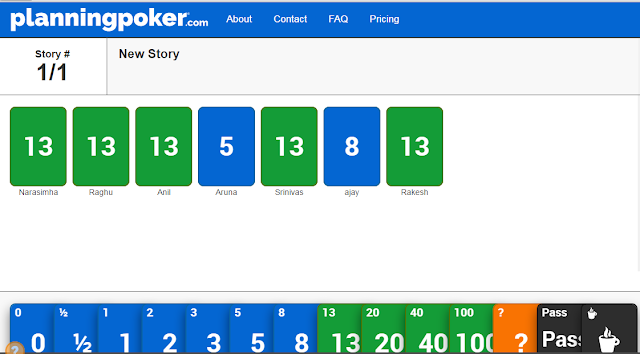I would like to share my thoughts and observations on the
latest version of Kentico.
Kentico 9 was
officially released to the public on Tuesday 24 November 2015. This release is
designed to help marketers and developers deploy their changes quickly and
reliably, provide tools to personalize content for unique customer experiences.
New features of Kentico 9:
Kentico has really stepped up its game with modern
enterprise-level features such as ASP.NET MVC Support, Modularity improvements,
Continuous Integration, Integrated Campaign Management enhancements and etc.
Below are key features of Kentico 9:
1.
Continuous Integration (CI): -
We need to be agile to succeed in the
market. We are struggling with manual and error prone publishing and deployment
processes with Kentico 8.1.
·
The CI
functionality enables you to be agile, allowing us to move all changes (code,
content, and physical media file changes) from one environment to another.
·
The tasks of development groups and developers
are brought together in singular work-flow where the data and code is stored in
a file system.
·
These can be committed to the Source Control and
imported to a different Kentico installation placed in a second environment.
2.
Integrated campaign Management (ICM):-
With new ICM, you can create, manage,
evaluate your marketing campaigns, and make better sense of data collected.
·
Kentico have revamped the Campaign Management
section
·
Optimize Your Campaigns for Better Results
·
The time to execute cross-channel online digital
marketing campaigns is greatly reduced
·
Allows you to develop campaign assets, launch
campaigns, and analyse results from one location, helping optimize your
campaigns for better results
·
You can now build custom campaign funnels to
help you analyse exactly the steps that are important for your business
3.
Modularization: -
Modules can be created to serve specific needs that can be
packaged automatically, stored, and reused in succeeding projects. It, thus,
reduces the development costs, thereby ensuring better success rate due to
streamlined work.
4.
Web
farm support: - Improved and streamlined the web farm synchronization
mechanism.
As the traffic to your website spikes, Kentico 9 executes web farm
synchronization feature to sustain multiple instances of the web application in
harmony with the environment. This ensures that the user experience is uniform.
Asp.Net MVC Support:-
·
By separating content and presentation, the MVC
allows content editors, marketers, designers, front-end and back-end developers
all to work on changes at the same time.
·
This reduces development time and allows for
changes and fresh content to be published fast and often. Full control over
website markup provides you with better opportunities for SEO optimization.
·
MVC makes it a lot easier to reuse content and
optimize it for mobile devices accessing your site, as it makes it much easier
to adopt the newest front-end development frameworks with which you build
responsive websites.
5.
Performance: - There
is no scientific proof to this one. However, as I have been using Kentico 9 for
the past few days I feel that overall it seems a bit snappier. This includes
navigating through the UI and first request startup performance too.
As per the Kentico release notes, improved
performance for:
·
Loading of page data by listing and menu web
parts.
·
Displaying of data on multilingual sites that
use the Combine with default culture setting.
·
Other page-related operations.
·
Core database level views.
Following are the other features of Kentico 9:
Smart Tips: - This is
a new feature in the admin interface that makes it easy to get up to speed
quickly for marketers and content admins. The A/B testing application has a
great example of this. The idea here is that if there are no tests created in
the application, a small quick instructional text appears leading the user on
what to do next.
E-mail Marketing: - Recipients
can now opt-out of all email marketing communication. You can configure the
opt-out to work across all sites or a single site only.
Smart
search improvements: - The SearchResultUrl transformation method now
contains an optional addLangParameter bool parameter. The parameter adds a
culture specific query parameter to the returned URL if more than one culture
version of the page exists. True by default.
Contact
Management: - The way Kentico recognizes contacts on the site has
changed to best accommodate the most typical B2C and B2B scenarios. The automatic contact deletion settings were
simplified.
Abandoned Shopping cart process: -
Kentico now enables store managers and marketers to automate marketing
processes related to abandoned shopping carts. For example, the system can send
email notifications to all customers who abandon their carts. That leads to
customers repeatedly visiting the store and possibly completing their orders.
Why should I upgrade to Kentico 9:
“Running a website is
often likened to running a car – you have to maintain it in order to keep it at
its best, and to get the most out of it.”
- · Features: - There are some interesting features which I explained above.
- · Future proofing: -
o
Upgrading generally makes upgrading in the
future easier.
o
Currently we are running bit older version 8.1,
if you want to upgrade it to latest version 9, you will have to upgrade
multiple times(8.1 to 8.2 and then 8.2 to 9) over in order to bring their
version up to one modern enough to cope with the final upgrade.
o
As you can imagine this can be quite headache
inducing – especially as there is likely to be database or programming changes
in between that need to be accounted for as well – so it’s good to keep with
the times!
- · Kentico only support 2 versions back, so if there are any problems then Kentico would not likely to help.
- · As we know Kentico is going to release another version (Kentico 10) by end of the November 2016.
·
If we are not upgrading to Kentico 9 now, in
future we may want to upgrade to Kentico 10 then multiple upgrades (8.1. to
8.2, 8.2 to 9 and 9 to 10) will be required.
























